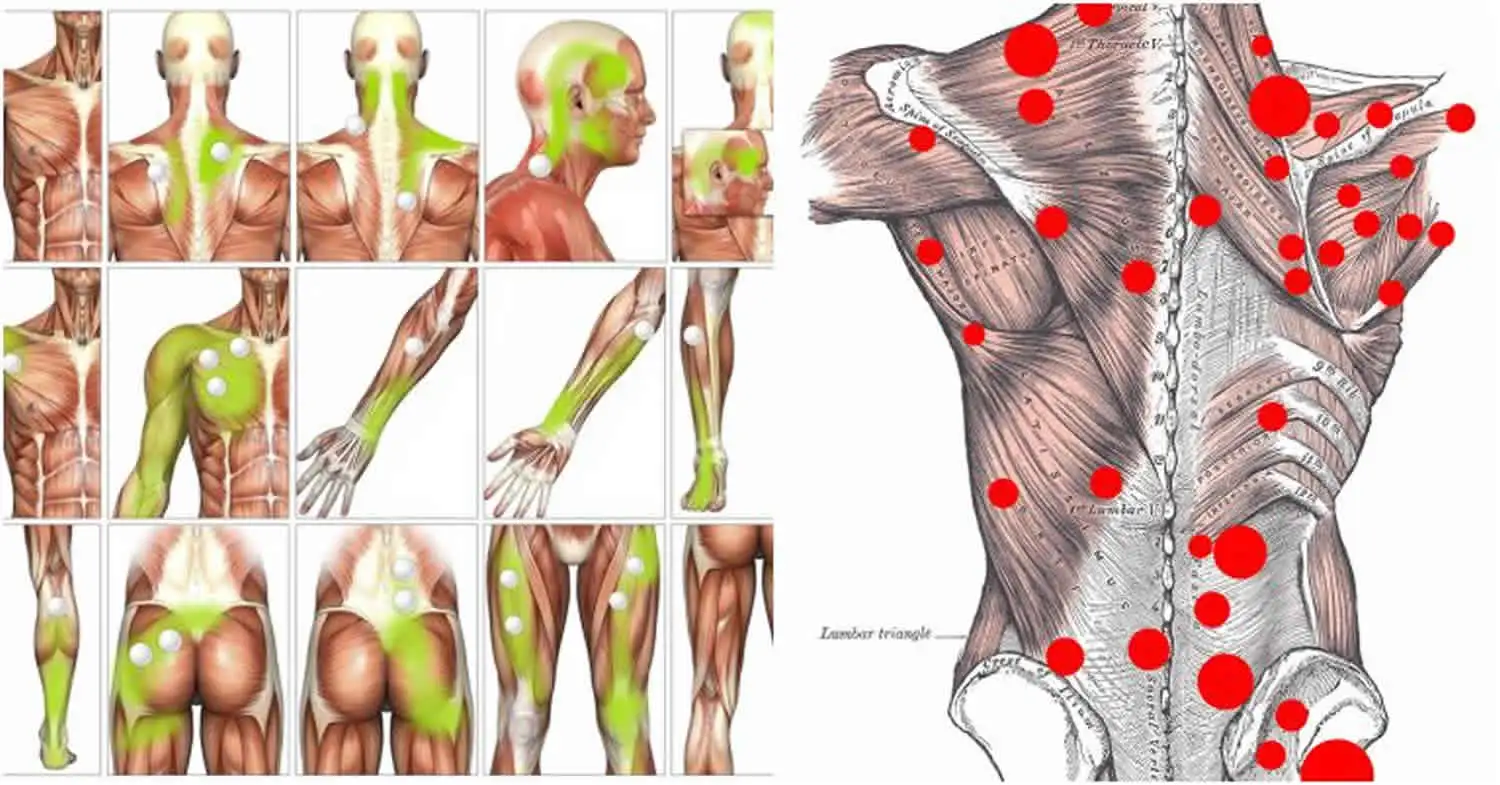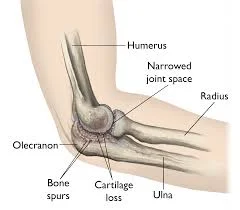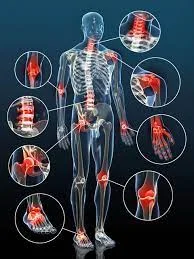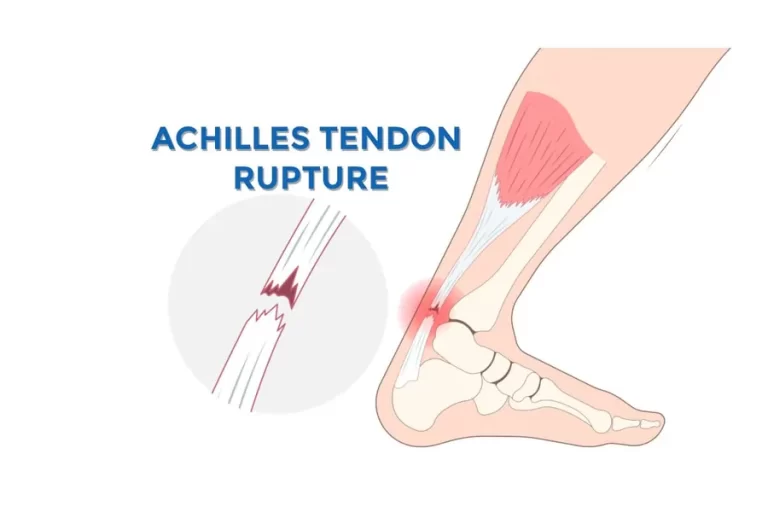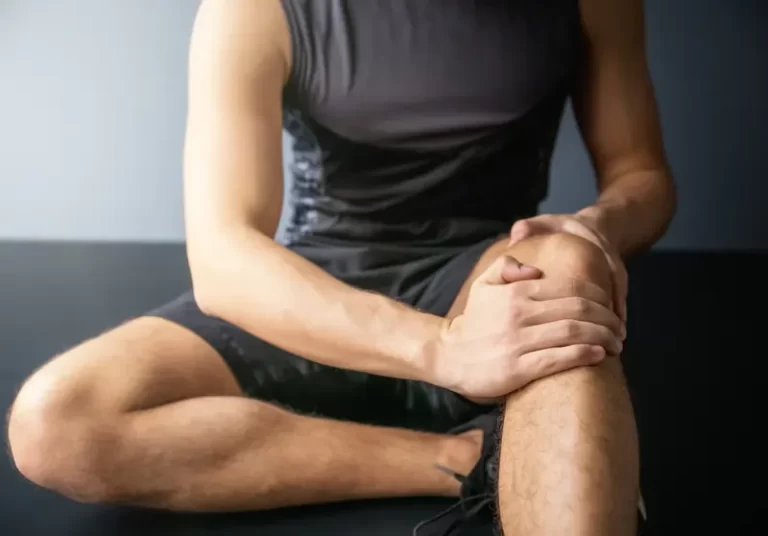Muscle Knots
What are muscular knots?
Muscle knots, also known as myofascial trigger points, are tight, sensitive areas of muscle that form when muscle fibers tense up and fail to release. These knots can develop due to overuse, poor posture, stress, or injury, and are commonly found in the neck, back, and shoulders.
Muscle knots can lead to pain, discomfort, and restricted movement, impacting daily activities and overall well-being. Addressing them through techniques like stretching, massage, and proper ergonomics is essential for relieving tension and promoting muscle health.
Latent or active muscle knots are also possible. Even when you are not contacting an active trigger site, it still hurts. However, a latent trigger point only becomes painful when it is pressed.
Anywhere there is muscle or fascial connective tissue, muscle knots can form. However, they frequently develop in your postural muscles, such as your:
- Shoulders, Neck, Back, and Pelvis
What does a muscle knot feel like?
Muscle knots might feel vary depending on where they are and what causes them, but they can be hurting, throbbing, tight, or stiff. You may also notice little lumps or knots in your muscles that produce pain when you touch, massage, or press on them.
Your muscles may be sensitive or uncomfortable in general, becoming continuously sore over time. Alternatively, you may have muscular weakness and a limited range of motion.
Symptoms of Muscle knots:
Muscle knots feel like little, tender lumps or nodules. They are palpable and can be felt when pressed. Knots, on the other hand, might be subtle and deep inside the muscle, requiring a person to press hard into the connective tissue to feel the knots or trigger points.
Symptoms of myofascial trigger points are:
Symptoms may include intense discomfort, numbness, or tingling.
sensations of nerve pain
A reduced range of motion
Trigger points are frequently the source of referred pain, as defined by clinicians. The pain spreads to the nearby muscles when someone applies pressure to the trigger point.
This symptom distinguishes a trigger point from a sensitive point. A sensitive point is a region that hurts only when touched and only in the area being pushed.
Unlike trigger points, sensitive points do not cause pain to radiate to neighboring muscles.
One of the most popular sources is muscle knots are commonly caused by the trapezius muscle. This muscle forms a triangular shape from the neck to the center of the back and shoulder.
Stress and poor posture are common causes of trapezius muscle tension and knots.
Muscle knots can also produce the following symptoms:
- Jaw discomfort.
- Lower back pain
- Symptoms may include tinnitus and tension headaches.
Causes of Muscle knots:
Muscle knots are commonly caused by the following:
- Stress and Tension
- Physical trauma can cause muscular damage.
- Emotional tension and bad posture.
- Extended bed rest or sitting without stretching
- A person who spends a lot of time sitting at work may acquire muscular knots as a result of being in the same posture for too long.
Diagnosis of Muscle Knots:
- Sore patches in the muscles are not visible, but they can be felt.
- When you touch these hurting locations, the muscles around them will tighten and stretch.
- You experience persistent pain in your lower leg (sharp or dull). The knots may only be on one side of the calf, but the pain is felt throughout.
- The discomfort is localized to the flesh (calf muscle), not the shin bone or knee joint.
- Strenuous exercise or exertion will make the discomfort worse.
- Muscles are weary and weak. Even little motions are demanding.
Treatment of Muscle Knots
Treating muscular knots might take some time. To remove the knots, you must break up the knotted tissue and soothe irritated nerves. The following are some steps you may do to assist break up the knots and get relief.
Rest
Allow your body to rest if you have muscular knots. Take a break from any activities that are producing knots or aggravating your pain or discomfort. Set aside as much time as possible for leisure. This might involve sleeping longer than normal or resting in a comfortable posture with cushions to support your body.
Stretch
Stretching gently to lengthen your muscles helps relieve stress. Stretch gently. Do not force yourself into any positions or activities that create discomfort.
To limit the chance of damage, hold stretches for at least 30 seconds before carefully releasing them.
Exercise
Aerobic activity may help ease muscular knots. If you have knots in your shoulders or neck, try jumping jacks, swimming, or any other arm action that works the muscles in your shoulders and neck. This stretches the muscles and boosts their blood flow.
Hot and Cold Therapy
Using a mix of heat and cold can help reduce muscle knot-related pain and inflammation.
Cold helps to constrict blood vessels, reducing edema. To apply cold, use a cold compress for 10 minutes before removing it for at least 15 minutes. Continue doing this until you begin to feel some relief.
Heat relaxes and loosens tight muscles, reducing discomfort. Heat may enhance blood flow, promoting healing.
Alternate between cold and hot treatments, or utilize whichever one works best for you. Hot and cold therapy should be used in combination with other treatments.
Apply a muscle massage.
muscular massages ease and relax muscular knots. Massage a muscle rub over the affected region twice daily to provide cooling relief. You may require assistance applying to difficult-to-reach locations.
Find a formula that includes menthol, capsaicin, or camphor. A patch test should be performed before applying a rub for the first time.
To do a patch test, apply a tiny quantity of ointment to the inside of your forearms. Wait 24 hours to be sure there is no response. If there is no response, you should be able to apply it to other areas of your body.
Trigger point pressure release
This therapy works by putting pressure on your trigger points. A trained practitioner will apply pressure to the muscle knot until it relaxes and releases. Following a treatment session, you will be given a set of motions to practice at home. This will help retrain your muscles.
Physical Therapy
In more severe situations, physical treatment may be recommended. A physical therapist can help you figure out what is causing your muscle knots. They will treat your pain using therapies that are suited to your situation. You will be taught strategies to relieve discomfort and keep it from returning.
Massage Therapy
Massage can help cure muscular knots. Massage treatment stimulates circulation and enhances blood flow. This can increase muscular function and aid in releasing your muscles.
Keep in mind that one session is typically insufficient to cure you entirely. You’ll probably need to have a few frequent sessions. Once you notice improvements, you can spread out your sessions.
There are several forms of massages. Which kind is ideal for you will depend on your tastes and how bad your muscle knots are. You may need to try a few various styles of massage before finding one that you enjoy.
Self-massage
In certain circumstances, you can massage your aching muscles yourself. Find the muscle knot and gently massage it with your fingers.
While massaging, try to relax the tight muscle fibers and relieve stress. Press hard onto the afflicted region and draw little circles with your fingertips.
Using a tennis ball placed between your back and the wall or floor, you may roll back and forth to exert further pressure on the knot. Experiment with slowly and gently manipulating the ball to apply pressure on places of stress. You may similarly use a foam roller.
Swedish Massage
This mild massage technique is ideal if you have a lot of stress or are sensitive to touch. Swedish massage combines lengthy strokes, kneading, and deep circular motions. Vibration and tapping are also utilized to promote calm.
Deep tissue massage.
This style of massage employs powerful strokes to relieve chronic muscular tightness. It emphasizes the deepest reaches of connective tissue and muscle. It is commonly used to alleviate muscular damage from injuries.
Sports Massage Therapy
This massage method is aimed specifically at athletes. It can be used to avoid or treat injuries.
Acupuncture
A little, microscopic needle is used in acupuncture to release the trigger point. The acupuncturist will identify the source of the discomfort. The needle will then be placed into the affected calf muscle to alleviate the trigger point. The muscle will stretch and extend.
Because the piercing needle does not cause muscle tears, which can take longer to heal, this treatment is by far the safest and least painful.
Dry-needling
Dry needling is a novel approach to treating calf muscle knots. The practitioner will insert many filiform needles, which are tiny and fine stainless steel needles, into the trigger points. The technique is known as “dry needling” as the muscles are not lubricated by the needles.
Electrostimulation
TENS machines are used to treat calf muscle knots and the associated discomfort. A TENS machine regulates pain impulses, which causes pain alleviation and endorphin release. As the discomfort eases, tight muscles relax.
The TENS unit’s electrode pads are placed over the affected region. The method causes an involuntary contraction of the calf muscles. They will begin to relax on their own, causing the knots to ease.
Chiropractic treatment
Calf muscle knots may form as a result of joint dysfunction and restrictions. Hands-on chiropractic manipulation of the muscles by the chiropractor alleviates these limitations. Once the limitations have been effectively eliminated, the knots will be removed.
Ultrasound therapy
Ultrasound treatment is equally successful at treating myofascial trigger points as invasive needle penetration procedures.
The procedure is equivalent to having a normal ultrasound. The machine’s transducer probe is placed on the affected calf region. Depending on the patient’s condition, a cold, therapeutic gel is also administered. Vibrations are sent into the body through the skin using the probe. Ultrasound waves induce tight knots in connective tissues to vibrate and loosen.
Laser therapy
Low and high-power laser treatments are the most effective ways to cure muscle knots and relieve their accompanying discomfort. Laser treatment stimulates the production and release of pain-relieving molecules in “knotted” locations. Furthermore, laser treatment delivers photon energy to the cells. There is no heat damage since the energy is absorbed by the skin and tissues through a photochemical process.
Prevention
Muscle knots are frequently caused by poor posture and inactivity. Maintaining proper posture and engaging in regular physical activity may help avoid muscular knots.
Many knots form as a result of recurrent muscular stress, thus a person should participate in a variety of activities to avoid overusing the same muscles. Depending on ability, activities might range from swimming one day to strolling the next.
Furthermore, psychological stress increases the prevalence of myofascial trigger points.
Therefore, adopting actions to alleviate stress Source practices like as meditation, mindfulness, deep breathing methods, yoga, and regular exercise may assist in avoiding their growth.
Outlook
Muscle knots and myofascial trigger points are frequently addressed with easy home therapies such as self-massage and stretching. However, certain knots can cause persistent discomfort and incapacity, interfering with a person’s daily life and activities.
When this occurs, a person should consult a doctor or physical therapist for therapy. A multimodal strategy utilizing a variety of strategies is often the most successful.
FAQs
How do you break a muscle knot?
Stretch. Getting up and moving or doing simple stretching exercises can sometimes help to ease a knotted muscle caused by being in an unpleasant posture for an extended period. Stretching can also help avoid knots.
What does a muscle knot look like?
Muscle knots, also known as myofascial trigger points, are tiny, bumpy regions of muscle that can cause discomfort. Home treatments, such as using warm or cold pads, are frequently used during treatment. However, expert therapy is also accessible.
Which deficit creates muscular knots?
Vitamin deficiency, particularly of vitamins B1, B6, B12, C, and folic acid. Imbalances in calcium, potassium, and iron can further worsen symptoms.
How long does a muscle knot last?
Muscle knots usually dissolve on their own after a week or two. When you have muscular knots, getting a massage might help you heal faster. You can also hasten the healing process.
Can muscle knots be cured?
Aerobic activity may help ease muscular knots. If you have knots in your shoulders or neck, try jumping jacks, swimming, or any other arm action that works the muscles in your shoulders and neck. This stretches the muscles and boosts their blood flow. Enhanced blood flow assists in the healing of wounded tissues.
Which foods create muscular knots?
Certain foods create inflammation, which enhances myofascial pain. Some foods to avoid are Fried meals (such as French fries). Dairy (milk, cheese, and yogurt).
Can low vitamin D levels induce muscular tightness?
Vitamin D shortage and insufficiency can induce or exacerbate neck and back discomfort and muscular spasms.
Which massage works best for knots?
Deep tissue massage: The most effective way to ease stress and muscular tightness. Deep tissue massage uses strong pressure and slow strokes to relieve uncomfortable “knots” and realign deeper layers of muscle. Your therapist will concentrate on both the typical muscles and the connective tissue.
References
- Crna, R. N. M. (2024, January 29). How to treat muscle knots. https://www.medicalnewstoday.com/articles/321224#outlook
- Cronkleton, E. (2023a, February 13). How to Treat and Prevent Muscle Knots. Healthline. https://www.healthline.com/health/muscle-knots#takeaway
- Clinic, C. (2024, August 28). Loosen Up Those Muscle Knots: Here’s How To Get Rid of Them. Cleveland Clinic. https://health.clevelandclinic.org/what-are-muscle-knots-and-how-do-i-get-rid-of-them
- Thakkar, D. (2023, December 13). Muscle Knots In Calf Muscle – Cause, Treatment. Mobile Physiotherapy Clinic. https://mobilephysiotherapyclinic.in/muscle-knots-in-calf-muscle/

